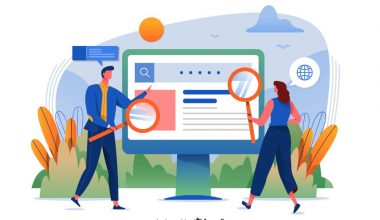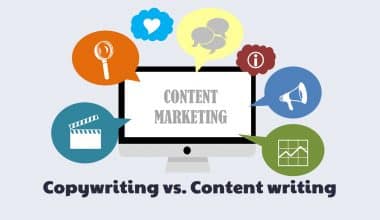I recall exactly when I noticed my content website was collapsing. I had spent countless hours and $32,000 developing what I thought was a strong, compelling platform. However, the outcomes were terrible. Traffic was static, engagement was low, and conversions were non-existent. It was a difficult lesson, but one that gave me vital insights. In this article, I’ll disclose the content websites mistakes you should avoid, which cost me $32,000 to learn.
Types of Web Content
Web content refers to all textual and graphic content that you share and publish online. It contributes significantly to user engagement and brand exposure.
Users will spend more time on your website, leave comments on blog posts and other sorts of content, share your offerings with others, and even promote you on social media. As a result, you’ll get higher-quality leads and potentially enhance your revenue.
If you’re wondering what form of web content will be most useful, consider the following 13 most common types:
#1. Blog Posts
Blogs continue to be the most popular source of information for consumers. Your blog postings can cover a variety of themes relevant to your target audience. These subjects may include trends, industry news, product reviews, how-tos, company events, and more.
#2. Infographics
To reach a larger audience, consider generating infographics to post on your website. As visual representations, they can readily and swiftly convey a large amount of information, saving the reader time.
#3. Videos
Videos are still popular among people of all ages online today, so if you create high-quality ones to distribute, you should be able to reach a larger audience. Share them on YouTube and embed them into your own website content.
#4. Podcasts
Podcasts are a popular complement to digital marketing efforts nowadays, as more customers listen while commuting, working out, walking, or doing other activities. Create a timetable for topics such as industry news, customer interviews, instructional manuals, and more.
#5. Case Studies
A case study is an excellent approach to sharing stories, which communicate directly to potential buyers. Consider your most satisfied customers and create a story about the challenge they encountered, what you were able to accomplish for them, and the results.
#6. eBooks
Creating an eBook that your website visitors can view instantly or download to read at their leisure is an effective marketing technique that helps to establish authority. Determine which of your content now receives the most attention and engagement, then expand on that issue.
#7. White papers
White papers are brief studies that attempt to provide insights for the reader on a complex problem. This form of content can help you establish your authority and acquire consumers’ trust.
#8. Social Media Posts
Social media is here to stay, so it’s important to figure out how to leverage it for marketing purposes. Determine which platforms your target demographic uses the most, then produce a range of posts to distribute. You can also put your social network feed on your website, allowing people to view what you post without leaving.
#9. User-generated content
Today’s delighted customers frequently develop their own content to praise your brand, product, or service. This content may take the form of articles, blog entries, videos, photos, or social media posts.
This user-generated content can be beneficial to your business, so find a means to distribute it. Incorporate it into your blog posts and distribute it on social media.
#10. FAQs & Knowledge Base
Consider including a FAQ (Frequently Asked Questions) page on your website to address any questions your target audience may have along their buyer’s journey. You can also include a few at the bottom of blog posts.
Another alternative is to create a knowledge base that serves as a dedicated customer support center. Similar to a directory, the consumer inputs a query and is given a list of articles to choose from about your product or service.
#11. Product Reviews
Creating product evaluations demonstrates your willingness to share information to your audience, allowing them to make smarter judgments. Other companies will often offer you a product to sample, or you can buy one yourself and write a review.
#12. Newsletters
Online and email newsletters are effective content forms for reaching both consumers and high-quality leads. In addition to the most recent company news, your email content could include product promotions, discounts, contests, surveys, or special offers. You may also provide links to similar blog entries and online pages.
#13. Interactive Content
Adding interactive content to your website will enhance visitor engagement. This type of content will help you stand out and keep visitors coming back to your website.
Quizzes, surveys, polls, and calculators are examples of interactive content. To simply construct these, use Ion, a user-friendly and fast platform.
The Value of Avoiding Common Content Website Mistakes
Creating a successful content website is more than just having amazing content. It is about optimizing every part of your website to ensure that it runs smoothly and satisfies the needs of your target audience. According to HubSpot, firms with optimized websites generate 55% more leads than those without. Let’s look at the most important mistakes to avoid.
Mistake #1: Ignoring SEO Best Practices
When I first created my website, I underestimated the value of SEO. I expected that quality content would naturally attract visitors. However, without good SEO, your content would be like a needle in a haystack. You must optimize your content for search engines to make sure that people can find it.
After understanding my mistake, I began implementing SEO best practices. I concentrated on keyword research, meta descriptions, and internal links. What was the result? A 60% increase in organic traffic in three months.
According to BrightEdge, organic search accounts for 53.3% of all website traffic, demonstrating the importance of SEO.
Mistake #2. Inadequate Website Design and User Experience
A poorly designed website might turn off visitors and drive them away before they ever read your content. My initial website design was cluttered, difficult to use, and slow to load. It wasn’t until I engaged in expert design that I noticed a substantial difference.
I completely redesigned my website, concentrating on clarity, easy navigation, and faster loading times. This not only enhanced the user experience but also boosted the average session time by 40%.
According to a Google study, 53% of mobile users abandon websites that take more than three seconds to load.
Mistake #3. Lack of Consistent Content Strategies
Consistency is essential in content marketing. Initially, my content publishing was irregular and lacked a defined plan. This inconsistency confused my readers and hurt my SEO efforts.
I created a content calendar and maintained a constant posting schedule. This helped me develop a dedicated audience and dramatically enhance my search engine results.
According to HubSpot, firms that blog routinely receive 97% more backlinks, which boosts their SEO and trustworthiness.
Mistake #4. Not Using Analytics
Without analytics, you’re basically flying blindly. I made the mistake of not constantly reviewing my website’s stats, so I had no idea what was working and what wasn’t.
Once I began utilizing Google Analytics regularly, I was able to make data-driven decisions that improved the performance of my website. For example, I identified which content was most popular with my audience and worked on developing comparable content.
According to Content Marketing Institute research, 72% of effective marketers attribute their success to a thorough understanding of how content works.
Mistake #5. Ignoring Mobile Optimization
In today’s mobile-first environment, having a mobile-friendly website is essential. Initially, my site was not optimized for mobile users, resulting in a huge loss of potential traffic.
After optimizing my website for mobile, I noticed a 50% increase in mobile traffic and a considerable increase in overall engagement.
According to Statista, mobile devices will account for more than 54% of global online traffic in 2021, highlighting the importance of mobile optimization.
Template to Avoid Common Website Mistakes
Website Optimisation Template:
Title: [Your Content Title].
Introduction:
- Briefly describe the objective of your content.
- Stress the importance of avoiding common mistakes.
The Main Body:
- Mistake 1: Explain the mistake and its consequences.
- Solution: Provide specific measures to avoid or correct the error.
- Mistake 2: Explain the mistake and its consequences.
- Solution: Provide specific measures to avoid or correct the error.
- Repeat for each error.
Conclusion:
- Summarize the key points.
- Encourage readers to use the solutions.
Call to action (CTA):
- Encourage readers to contact you for additional tips or assistance.
Examples of Websites with Great Content
We compiled a list of websites whose content stands out for a certain purpose. Let’s look at what makes websites’ content outstanding and why.
#1. Charity: Water: Tells Engaging Stories
We humans enjoy stories. You may take advantage of this propensity by including stories in your content.
The best stories touch people’s emotions. It’s easy to assume that your brand doesn’t have any stories to tell, but it does. Consider what your brand brings to the table. What are you doing? Who do you help?
Check out charity: water for an example. They supply water resources to those in need, yet their writing is aimed at those who can get water with the flip of a faucet handle. By relaying the tales of individuals who do not have the privilege, they can reach the most helpful audiences.
Case studies are ideal for telling tales. Consider your most loyal and pleased consumers or clients. What have you done for them? Tell a story. You can leave specifics and identifiers out of the story. Even a hazy story is preferable to no story.
You may also share your own tale. Help others understand what you do and why. Charity: water mentions this on their About Us page.
#2. thredUP: Stay Current and Breaking Industry News
Google takes note of sites with high-quality content that is routinely updated. ones that update frequently are perceived as current and relevant, and hence typically rank higher than ones that become stale.
As a result, sharing current, even breaking news, is an excellent way to accomplish this. However, not every company can be a news website that consistently publishes the most recent headlines. So, how can you stay current without traveling to a newsroom? Check out ThredUp.
thredUP is a secondhand clothes store, but their blog offers a wealth of knowledge on sustainability, fashion trends, and more. They see the big picture in their content. In fact, they have established themselves as a reliable source of news.
Any brand can accomplish this. What are your consumers interested in? Set up Google alerts and write blogs and posts that respond to the newest news in your field. Get ahead of the game by writing articles that explore and elaborate on trends, positioning your business as the authority.
#3. Etsy: Use Subject Matter Experts (Industry Insiders)
Don’t be scared to include other people’s perspectives when creating content. Subject matter experts can help you reach a larger audience and go deeper into areas that are important to them. They can also increase your brand’s credibility, which is important for SEO.
Google employs the EAT acronym to define and rank quality standards in human analysis. EAT stands for expertise, authority, and trustworthiness. Bringing in topic matter experts can help improve the quality of your content.
For example, look at Etsy’s blog. They consistently attract industry leaders and changemakers.
You can also interview specialists. You aren’t limited to writing content; you may also host it on YouTube, Instagram, or Facebook. You could even create a podcast.
#4. Bissell: Ensure Your Copy Sounds Human
Human copy is personal and conversational, not casual but friendly. It conveys emotion without being salesy or aggressive. It’s simple and straightforward.
For a more human touch, see the Bissell blog and website. They make an otherwise dry, dull issue approachable and personal.
If you’re having problems with this writing style, take a break. Be real, and write as naturally as you speak. You can use a voice-to-text tool to help you translate a real conversation into writing.
#5. QVC: Offers interactive content
Interacting with people on your website is one of the finest ways to stay human and engage your audience.
Allowing your audience to provide input and reply to your content might be the first step toward creating interactive content. This can take the form of comment boxes following your blog or social media posts.
You can also include audio and video features in your post to engage your audience.
QVC uses this type of content to keep its audience engaged and returning for more.
During live performances and events, they encourage spectators to engage in forums and social media groups. As a result, they become more than just clients. They feel a part of the QVC community.
#6. BarkBox: Incorporates Various Media Types
Sites with outstanding content attract a variety of media types. This might contain a video embedded in a blog post, a presentation deck, a download, a large number of images, photos, videos, audio, and more.
Using different aspects may bring your stories to life while also allowing you to get your point across in a variety of ways that people can absorb.
If you need some inspiration, visit BarkBox’s blog.
#7. Neil Patel: Provides answers to users’ most frequently asked questions
Strive to answer frequently requested queries from your consumers. Google search results may include featured snippets for sites that provide excellent answers to frequently asked issues.
You can accomplish this by posing and answering questions within your content. Make sure they are visible and easy to scroll. Style is entirely up to you: you can include questions in headers and subheaders or use lists or bullet points.
Key Takeaways
- Effective SEO is critical for increasing organic traffic and making your content discoverable.
- A clean, fast, and intuitive design improves the user experience and keeps visitors interested.
- Consistent content publication helps to establish a loyal following and enhance SEO.
- Monitor analytics regularly to make data-driven decisions and improve content performance.
- Make sure your website is mobile-friendly to attract and engage the growing number of mobile users.
Conclusion
Learning from these mistakes has transformed my content website. You can avoid costly mistakes and position your website for success by emphasizing SEO, enhancing design, maintaining a consistent content strategy, employing analytics, and optimizing for mobile. What mistakes have you made in your content website journey? Share your experiences, and we’ll talk about how we can all learn and grow from them.
Related Articles
- What is a Content Optimizer and How Can It Benefit Your Website?
- WEBSITE TITLE VS ARTICLE TITLE: Differences & Examples
- How Many Backlinks Per Day Is Safe for Your Website? A Detailed Guide
- SEO Audit Checklist: 15 Steps to Review Your Website
- When Is The Most Effective Time To Boost Content on Social Media For Maximum Reach In 2024? Answered!






